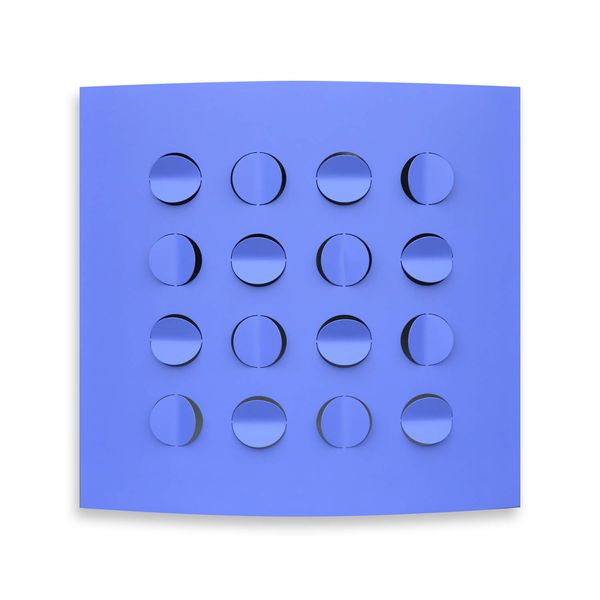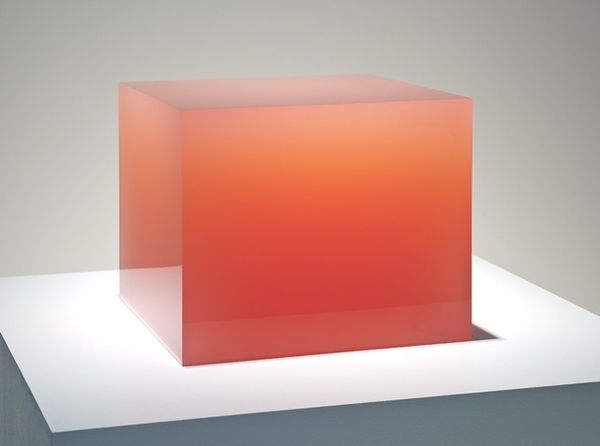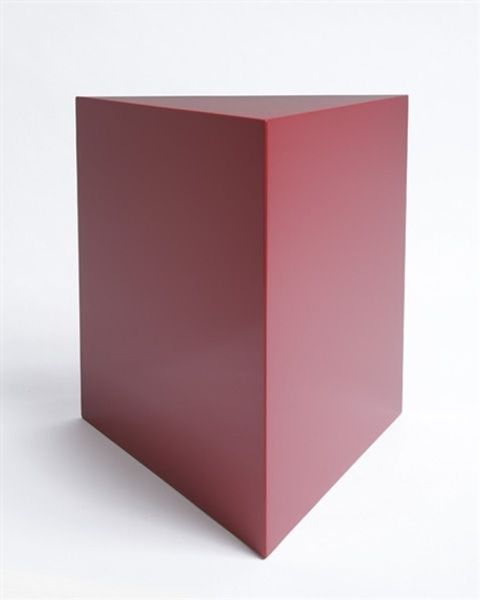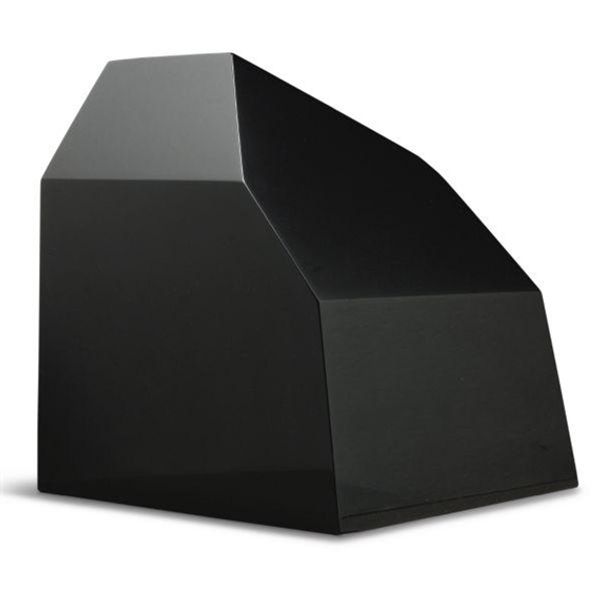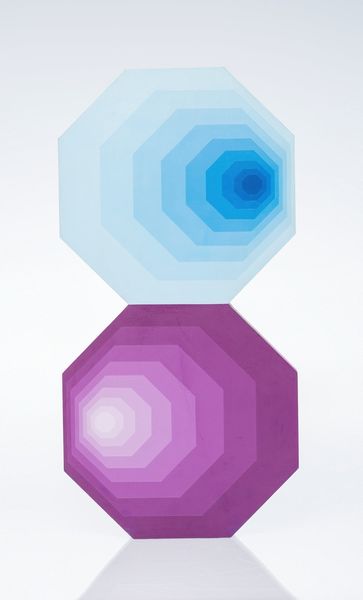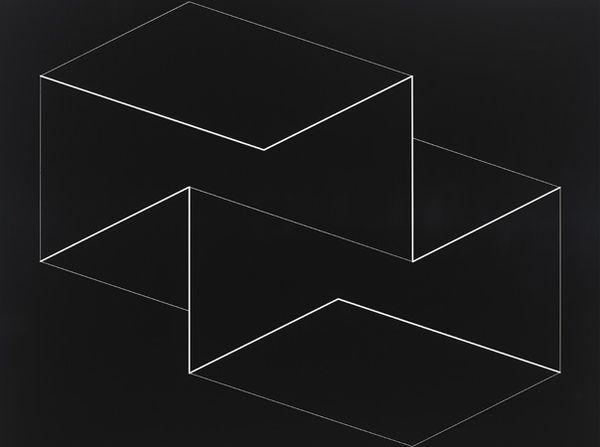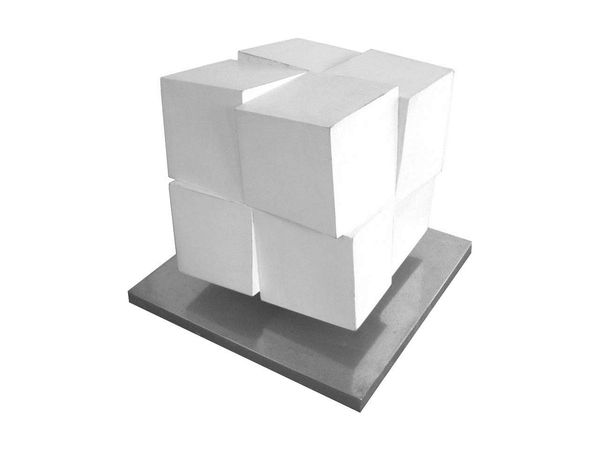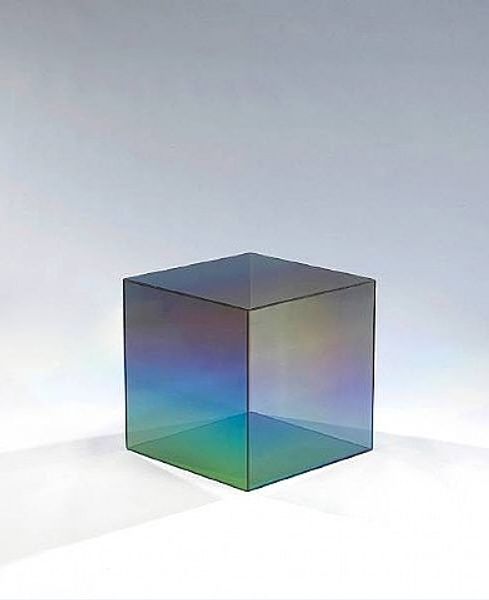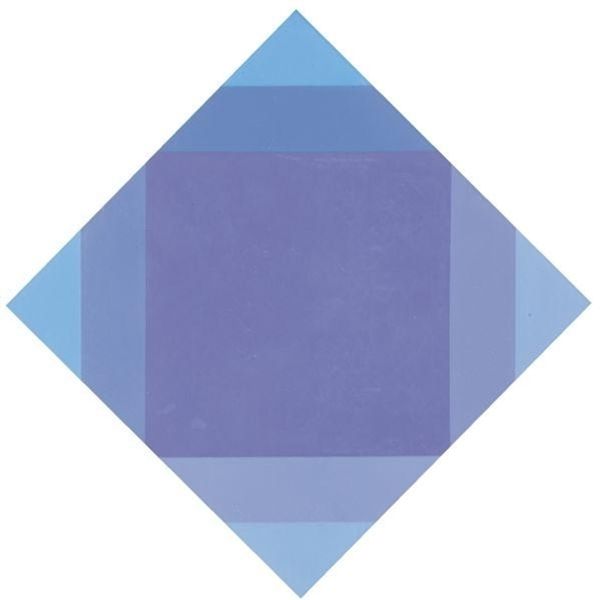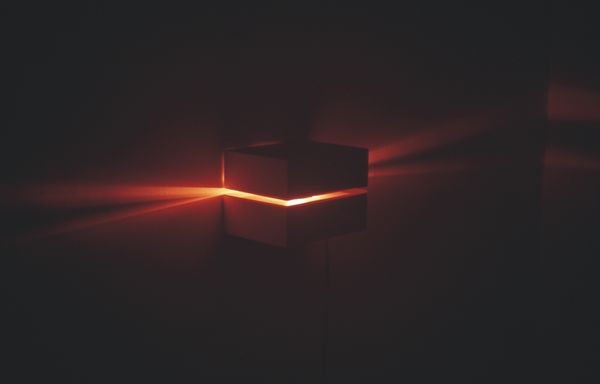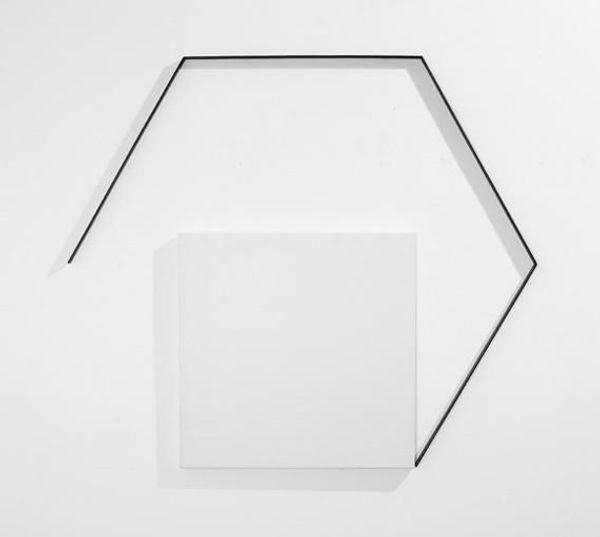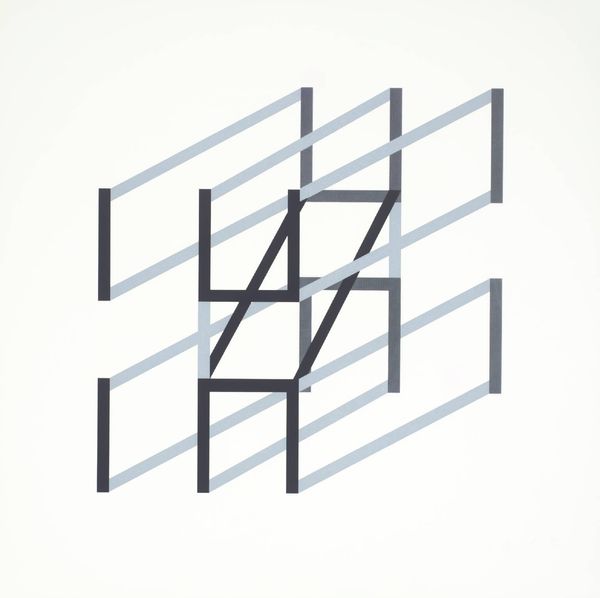
sculpture, wood
#
minimalism
#
geometric
#
sculpture
#
abstraction
#
wood
#
hard-edge-painting
Copyright: John McCracken,Fair Use
Editor: So, here we have John McCracken’s “Lavender Box” from 1969, a wood sculpture so flawlessly painted it's almost unreal. I'm struck by how deceptively simple it seems, yet it practically vibrates with color. What exactly am I supposed to *see* in what is essentially a violet cube? Curator: Isn’t it fantastic? It’s like stumbling upon an alien monolith accidentally left behind. For me, it’s less about ‘seeing’ something literal, and more about experiencing its presence. The colour, that saturated lavender, acts like a portal. McCracken was obsessed with how surfaces interact with light, creating these almost otherworldly forms. Do you get that sense of…otherness? Editor: Absolutely, now that you mention it! It feels like it shouldn’t exist in our plane of reality. Was this "otherness" something the artist was actively pursuing? Curator: He absolutely was. Think of the Minimalists. They were all challenging our perception, weren't they? Getting us to see art not as representation but as pure object. McCracken just added this layer of sublime colour that almost transcends the material itself. It teeters on the edge of being and not being, doesn't it? I feel this "Lavender Box" could teleport me away if I touched it with faith. What do you reckon? Editor: Okay, "Lavender Box" is less mute geometry, more meditation portal! Curator: Exactly. It's as much a question about reality and perception, which makes looking at this cube a doorway to a lot more than meets the eye. Editor: Well, my mind's officially expanded beyond a simple shape! I’ll be staring at simple shapes differently now, forever wondering which dimension they originate from.
Comments
No comments
Be the first to comment and join the conversation on the ultimate creative platform.
